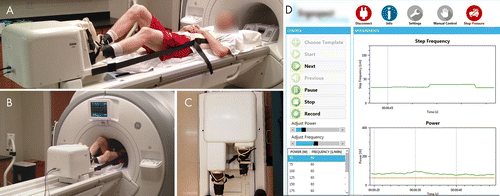4D Flow MRI Measurements More Beneficial Than Stress Echocardiography
Imaging method offers greater understanding into right-sided heart dysfunction.
Cardiovascular 4D MRI does a better job of measuring blood flow during exercise than does traditional stress echocardiography, giving providers an improved understanding of dysfunction on the right side of the heart.
In a small study from the University of Wisconsin, researchers analyzed nine healthy adults with 4D flow MRI both during strenuous exercise and at rest. Their results, published in the June 18 Radiology: Cardiothoracic Imaging, showed this strategy was both accurate and reliable in quantifying both ascending aorta and main pulmonary artery flow.
As part of the study, the team, led by Jacob Macdonald, Ph.D., performed 4D MRI on nine adults, with an average age of 26, while they worked out on an MRI-compatible stair-stepper, as well as while they were at rest. The data was gathered between March 2016 and July 2017.
A, Photograph shows the participant set-up for the MRI-compatible exercise stepper. The participant is attached to the stepper with boots with hook and loop fastener straps. A chest harness connected to the stepper minimizes bulk motion during exercise. The strap lengths can be altered to adjust the participant’s positioning on the table. B, Photograph shows the participant exercising in MRI bore. C, Photograph of the frontal view of the stepper shows the dynamic range of stepper pedals. D, Screenshot of monitoring software shows the real-time measurements of step frequency and power during exercise. Courtesy: Radiology: Cardiothoracic Imaging

The scanning process lasted nine minutes, limiting the number of patients who were able to physically complete the study, but experts in an accompanying editorial noted this work is still valuable in bringing 4D flow MRI into real-world used.
Based on study results, the group determined flow measurements in the ascending aorta and the main pulmonary artery can be reliably captured with “good internal consistency.” And, while the signal-to-noise ratio of mid-exercise scans fell by 16 percent on average, the difference was not significant when compared to the at-rest scans.
According to the editorialists, MRI images show that exercise can blur vessel, ventricular, and arterial boundaries, potentially making flow quantification challenging. Additional studies are necessary, they added, and, this first study testing the feasibility of 4D flow MRI as a hemodynamic monitoring tool for exercise can be used as a model.
Could Ultrafast MRI Enhance Detection of Malignant Foci for Breast Cancer?
April 10th 2025In a new study involving over 120 women, nearly two-thirds of whom had a family history of breast cancer, ultrafast MRI findings revealed a 5 percent increase in malignancy risk for each second increase in the difference between lesion and background parenchymal enhancement (BPE) time to enhancement (TTE).
MRI Study Suggests Shape of White Matter Hyperintensities May Be Predictive of Cognitive Decline
April 7th 2025Emerging research demonstrated that cognitive declines in memory, executive function and processing speed domains were associated with irregular shape of periventricular/confluent white matter hyperintensities.
Can Abbreviated MRI Have an Impact in Rectal Cancer Staging?
April 4th 2025Abbreviated MRI demonstrated a 95.3 percent specificity for rectal cancer and provided strong agreement with the full MRI protocol for T staging and detection of extramural venous invasion, according to newly published research.